Rick Lober, Vice President and General Manager at Hughes Network Systems, LLC (HUGHES), leads the company’s Defense and Intelligence Systems Division (DISD) in serving U.S. and allied defense and intelligence organizations worldwide with advanced SATCOM solutions, including fixed VSAT and Mobilesat systems, network management, ground and airborne communications on the move, and classified programs.
Under Mr. Lober’s leadership, the Defense team has won programs such as: SATCOM for the General Atomics Predator UAV; mission management for the U.S. Air Force Space and Missile Command’s Protected Tactical Enterprise System (PTES) and Enterprise Management and Control (EMC) program; the application of Artificial Intelligence and Machine Learning techniques for the U.S. Army’s Narrowband SATCOM network; and specialized terminal development for the various U.S. Forces.
Mr. Lober. Would you tell us what prompted you to join Hughes Defense and Intelligence Systems Division to further your career?

Rick Lober (RL)
I joined the Hughes team because I am passionate about developing technologies that allow our warfighters to have increased capabilities that meet their mission requirements at an affordable cost.
Hughes takes commercial-off-the-shelf (COTS) technologies and applies them to the unique needs of our soldiers, with specific focus on SATCOM solutions that can be adapted to suit military markets. The company employs the smartest innovators that I’ve ever had the pleasure of working with, and I consider myself lucky to count them as my colleagues.
I also enjoy start-up opportunities, and the Hughes Defense and Intelligence Systems Division (DISD) has been this type of organization. While the Hughes Aircraft company, our legacy namesake, had been a long-standing provider of defense applications, Hughes Network Systems only made a serious run at the defense market over the last 10 years. Together with an incredibly talented team, I helped create our DISD group to focus exclusively on the defense community. This was an opportunity to grow a new division with the backing of the world’s largest VSAT operator and SATCOM technology provider.
The entrepreneurial spirit at Hughes has allowed me to grow in my career, mentor others as well as bring all the advantages of the Hughes commercial SATCOM acumen to the defense sector.
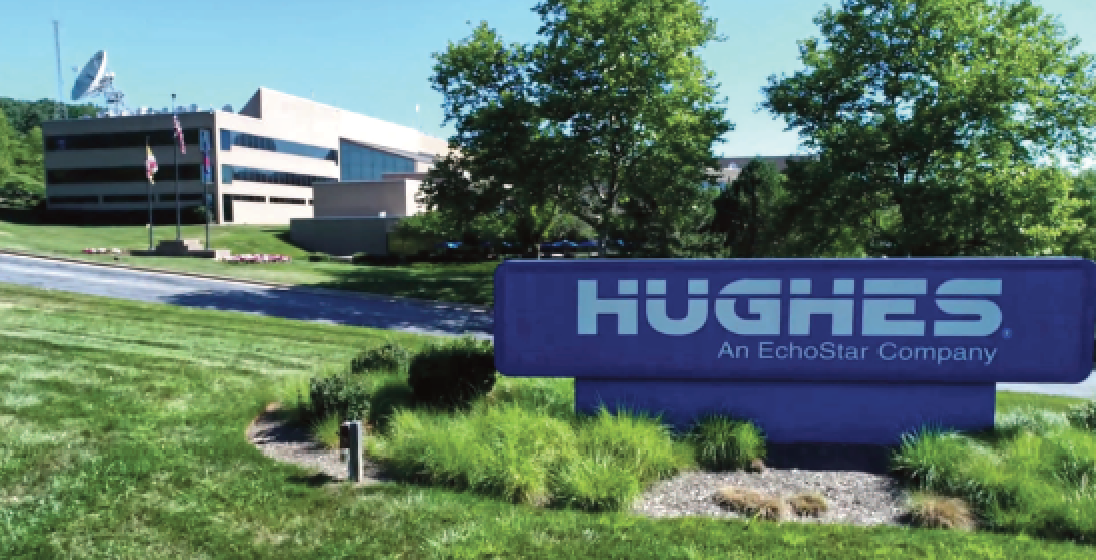
What challenges are presented when a commercial company, such as Hughes, works with military/agency/government (MAG) procurers of product to develop timely solutions for our nation’s warfighters? How are such challenges overcome?
RL
I would say that the biggest challenge in working with MAG customers is the pace. The Department of Defense (DoD) is a large organization that operates at its own unique pace. It’s important to have a long-term perspective when working in this market, especially when compared to commercial industry.
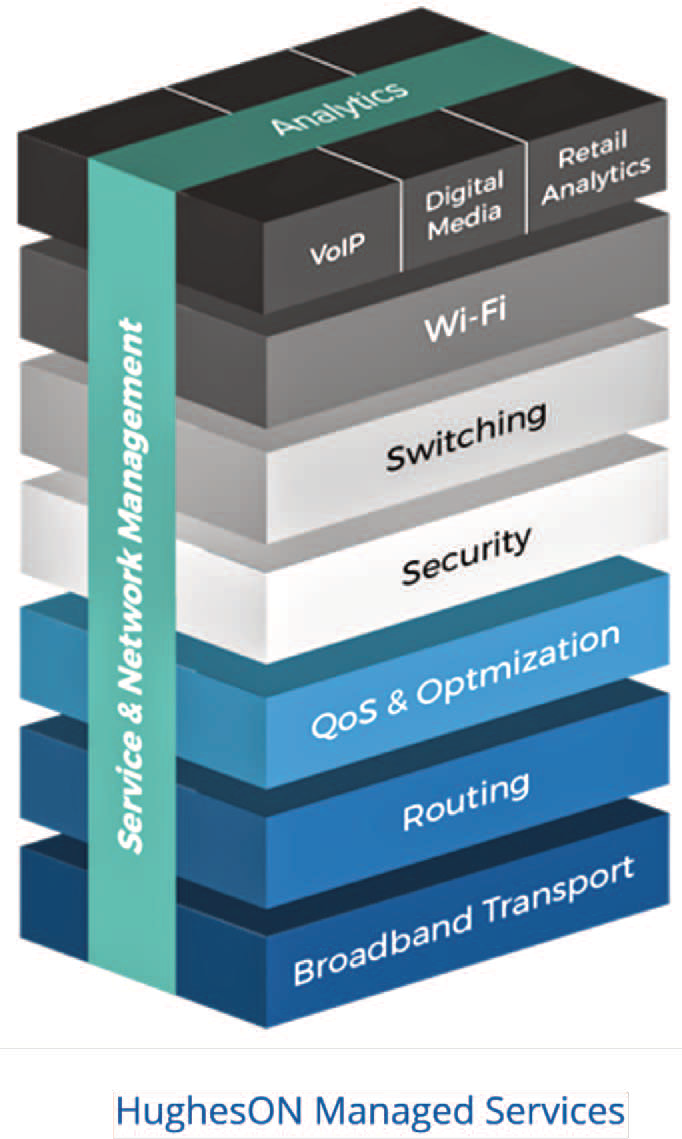
Luckily, the way to overcome this challenge is simply to exercise patience and understanding in how the process works. Patience is not only related to the time needed to get things done, but also about evolving the mindset of DoD leaders and users. It has been exciting to see the DoD move more quickly in recent years using more agile approaches to acquisition.
Today, the DoD is becoming a more modern, data-oriented service, and it’s really a privilege to be in a position to support that evolution – especially knowing how important it is to maintain our leadership relative to other nations that are also gaining significant technological know-how. The landscape is changing, the market is changing, and the DoD has the opportunity to create new partnerships focused on the speed of technology. It’s exciting to work with the DoD to help in this transformation, knowing that the warfighter and our national security will reap the benefits.
Do you believe the newly formed U.S. Space Force and U.S. Space Command will quickly work to reduce time-to-field of crucial on-field product and technologies within the MILSATCOM environs?
RL
Absolutely. The U.S. Space Force and the U.S. Space Command are helping the DoD manage and operate space resources more efficiently. As a result, military users will have the resources they need when they need them and where they need them – especially at the tactical edge.
We are seeing progress and agility coming from several organizations, including the Space Development Agency (SDA), the Air Force Research Lab (AFRL), the Space Force Space and Missile Systems Center (SMC) and the Space Force Commercial Satellite Communications Office (CSCO). I believe this momentum will help speed technology deployments and give warfighters access to new, more secure and resilient technology.
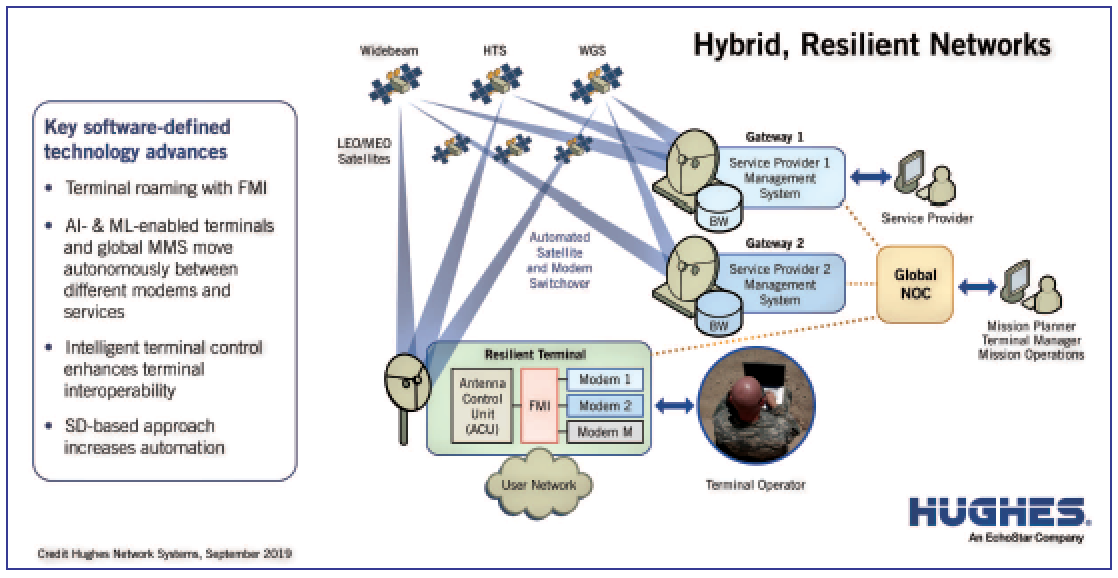
Mr. Lober, would you tell our readers about the substantive changes that occurred within Hughes Defense during 2020 and the firm’s national security customers as well as within DoD.
RL
Well, 2020 didn’t end up as any of us expected! But that being said, we stayed very busy throughout the year focusing on our customers and keeping them connected. We have seen strong momentum from our DoD customers resulting in significant follow-on orders from the Army, Space Command and Coast Guard along with major primes.
The changes to our defense business focused on continuing to improve the customer experience, especially by meeting their increasing requirements for mobility services and more sophisticated network management. To that end, we have evolved our application of Artificial Intelligence (AI) and Machine Learning (ML) techniques in many new ways this year — bringing a lot of benefit to DoD and commercial customers in optimizing networks and freeing valuable resources to focus on other areas of network management.
One example of this focus on mobility and network management is the work we did this year on the U.S. Air Force Enterprise Management & Control contract, which we received late in 2019. We have been testing the networking prototype which uses our Flexible Modem Interface (FMI) capability and our software-defined network management to prove the technology elements required under this contract. We have also delivered additional capabilities based on input from the customer at SMC.
More specifically, we held a major capstone demonstration for this contract in July showing how FMI and network management can autonomously deliver the flexibility and resilience needed by the Air Force. Our software-defined technology learned from the data in the satellite communications (SATCOM) network and then, seamlessly routed data to the best terminal, modem, satellite and service provider needed at any specific time. Our advanced system exemplified how quickly these ‘self-healing’ actions can enhance connectivity to users— delivering data within hours or just a few minutes compared to the weeks or months that DoD users currently need to access a new circuit.
Time matters when warfighters and decision makers must fight at mission speed, even in a contested environment, and I think the military audience for this demonstration appreciated how the network can support real-time transmissions. They also saw how flexible networking can apply to UAVs, which need reliable, timely transmissions to plan targets and maintain situational awareness. We demonstrated this by driving a Humvee outfitted with our HM400 advanced, software-defined modem and a small, GetSat Ku-band antenna to show rapid switching from satellite to satellite to ensure connectivity.
The adoption of AI techniques is helping the company to streamline network operations across our commercial and DoD customer base. We recently announced the commercial availability of our AI for IT operations (AIOps) solution for Wide Area Networks (WANs). This new
capability is integrated into the company’s HughesON™ Managed Network Services for our commercial and government customers. The Hughes AIOps feature is already in use across more than 32,000 managed sites. The technology automatically predicts and preempts — or ‘self-heals’ — undesirable network behavior, preventing service-disrupting symptoms in 70 percent of cases. Hughes is the first managed services provider to deliver a self-healing WAN edge capability to enterprise customers and we can deliver these benefits to the DoD as well.

Talking about the Hughes Defense team, can you tell us about your specific successes during 2020?
RL
Our team achieved several significant goals during 2020 and we continue to grow at a very fast pace. We received a follow-on contract from the U.S. Coast Guard to integrate Beyond Line of Sight (BLoS) communications for their HC-27J aircraft, which is critical to Comms-on-the-Move (COTM) missions for ISR and human and disaster relief.
Another important win last year came from General Atomics and the U.S. Army to support their Gray Eagle, MQ-1ER unmanned aircraft system. The Army is modernizing the communications for this platform; and our HM400 software-defined modems integrated together with the DoD’s waveform technology will give the Army much-needed resiliency in all environments. We also made great progress on our Network Management work for the Army’s Narrowband systems and with Boeing on the U.S. Air Force Protected Tactical Enterprise System (PTES) program.
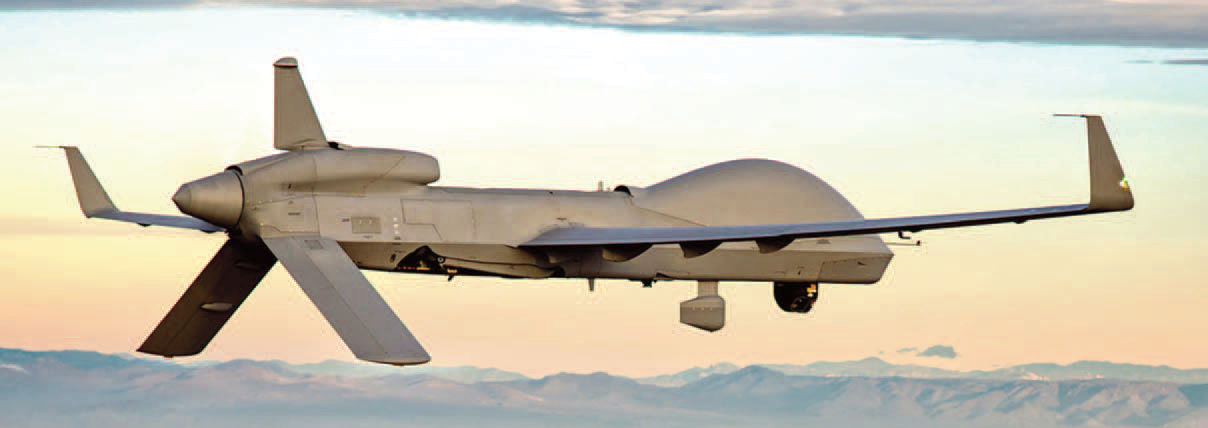
Another hallmark of our success this year was the exciting demonstration of our HeloSat through-the-rotor technology aboard a flying Black Hawk helicopter. Before HeloSat, helicopters could only get connectivity, either at low data rates which are useful for voice communications (but not data or video), or at higher data rates with interruptions from the blades blocking the signal. To solve this problem, our engineers created a specialized, software-defined waveform that can transmit through the rotor blades.
This summer, a few hundred military and industry leaders from around the world witnessed our successful BLoS, high data rate, full-motion video (FMV) SATCOM capability as we livestreamed the flights.
During one of the demonstrations, we achieved rates of more than 17 megabits per second without packet loss, both up to and down from the helicopter using an FAA approved, fuselage-mounted antenna at both Ku- and Ka-band.
It was pretty sensational to see the helicopter lift off from an airfield in Tennessee and then watch full-motion, high-definition video ‘surveillance’ from the Black Hawk while I sat at my computer in Maryland with people from Spain and Dubai also watching the demo.
Can you describe what has given your group this momentum in 2020, especially during the pandemic?
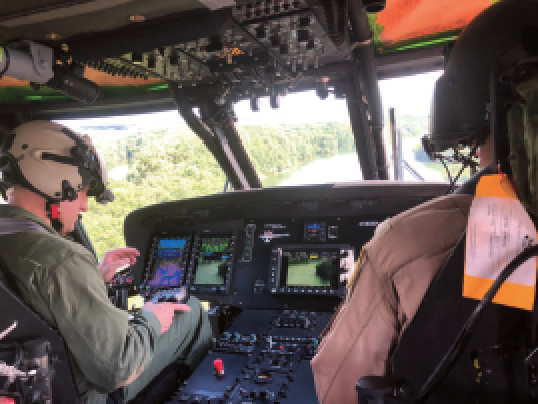
RL
We are lucky here at Hughes in that we are an essential business, offering services and technologies that people need to stay connected – not just for work and school at home, but for military personnel stationed far away from home.
Very early in the pandemic, we were called upon to set up connectivity for soldiers who had to quarantine after returning from their deployments — and our team got in their cars and drove the equipment to the base because shipping it would have taken longer, and these people needed the internet to connect with their families. That’s the kind of dedication and commitment that motivates all of us at Hughes — it’s about always responding to our customers’ needs, sometimes beyond our contracted requirements.
We strive to fulfill all customer requests, and to meet all cost and schedule goals while offering state-of-the-art communications technology. Most importantly, we offer our customers open systems with standard industry interfaces, and always give an open and honest opinion regarding the best solution to meet their requirements, even if that does not include Hughes technology. Our customers appreciate receiving honest and technically accurate answers to their questions.
As we continue to pursue this customer-focused approach, we have moved toward becoming a systems integrator/solutions provider that uses a turn-key approach versus just selling a product.
What progress have you seen in the DoD’s effort to create an enterprise-wide satellite communications network and will it bring the resilience they need now?
RL
Our team has continued to support the U.S. Air Force as they work more closely with industry partners to leverage commercial innovation. For their network modernization effort, we are playing an important role through the EM&C program. Our FMI technology and our advanced, open-systems network management will help create the unified enterprise network that U.S. Space Force General Raymond’s SATCOM vision proposes. We have had many discussions with the Air Force and the Space Force about how to make their SATCOM networking more resilient.
During these discussions, we have demonstrated advances in software-defined networking, both for individuals and large enterprises. Hughes currently supports more than 1.5 million worldwide users and thousands of enterprises around the globe, delivering always-on connectivity where dynamic software and AI and ML techniques ensure 24X7 connectivity, even in remote locations.
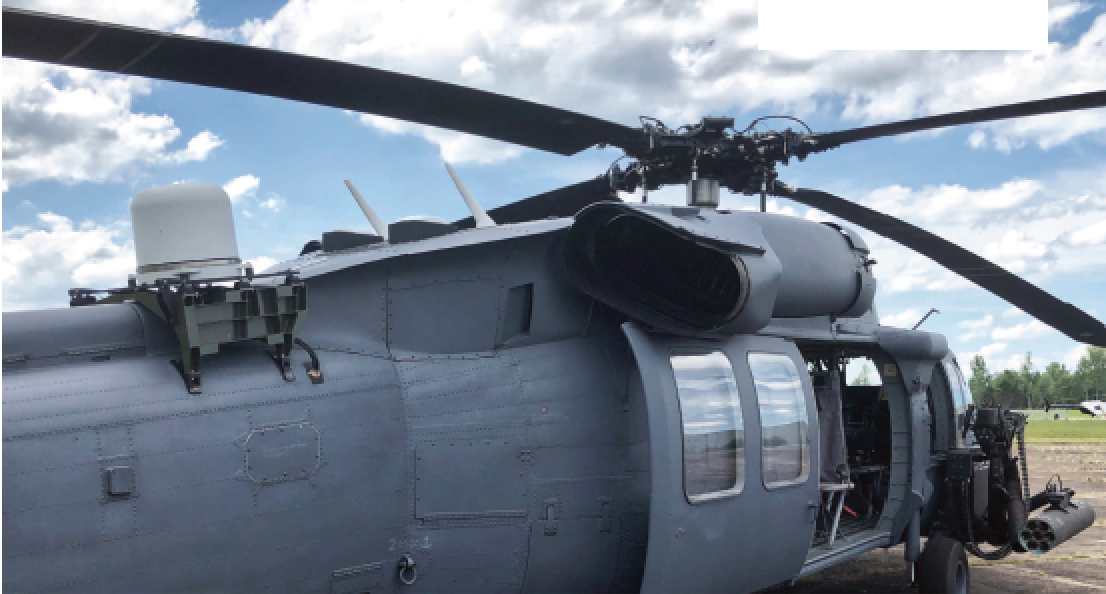
Photo of a Black Hawk helicopter.
We hope to apply this expertise in managing complex and highly efficient commercial networks to numerous DoD managed services programs that are planned in the near future.
Will airborne mobility applications growth continue?
RL
Yes, we absolutely do. Our team has focused on mobility for airborne platforms for several years now using an open systems approach because military users want the same connectivity and data access everywhere they go. This is why we’re bringing wideband, high data rate comms to helicopters and UAVs. Some of these platforms have typically relied on low data rate transmissions using L-band capacity which works well for voice communications but not for full-motion video, which is critical for Intelligence Surveillance and Reconnaissance (ISR). We believe that all helicopters will have access to high data rate connectivity on and off the aircraft within less than 10 years. We also know that airborne platforms need flexible technology that meets each aircraft’s size and weight requirements. We are constantly studying and testing technology, antennas and terminals that meet military environmental, size, weight and power requirements. We look forward to supporting smaller UAVs as technology becomes smaller and lighter.
Can you share your thoughts on LEO for the DoD as well as how Hughes sees this industry development and market segment?
RL
With today’s increasing demand for global connectivity across all sectors of the market, we are entering into a new world that needs hybrid networks. No single transport can meet all the demand. On top of that, a single-threaded system is simply untenable in a military environment (not to mention a commercial situation).
The DoD needs to ensure that their communications and data networking are resilient, and hybrid networks provide that redundancy. LEO systems bring some great benefits, including lower latency and broad global reach, e.g., including the polar regions — a complement to GEO systems which bring capacity density and a low cost-per-bit.
Our task is to show our military and national security agencies how they can use hybrid networks to fulfill all these requirements across land, air and maritime mobile applications. To this end, we recently demonstrated in-flight roaming across MEO and GEO satellites with SES and Thales, and our JUPITER™ System supports aero roaming, among JUPITER-driven systems worldwide.
Mr. Lober, what do see as the most critical issues that need to be addressed for MILSATCOM going forward?
RL
Hughes has seen progress over the last few years regarding acquisition and access to SATCOM capabilities. Despite these steps forward, some critical issues must still be addressed.
Firstly, DoD should better manage the satellite communications networks it already uses so troops on the battlefield are always connected, even when those networks are under attack. This issue should be considered in the U.S. Army’s recently announced RFI regarding commercial best practices and innovative business models for possible replacement of the existing logistics network operating design.
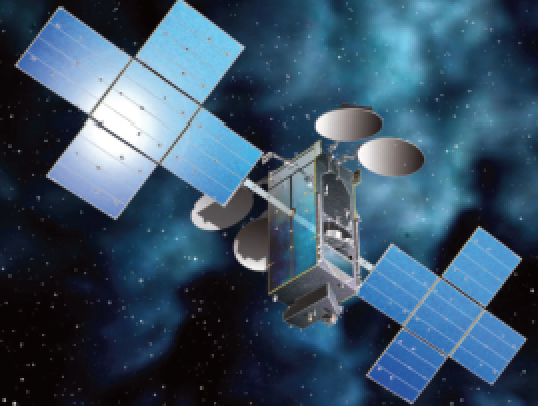
Artistic rendition of a Hughes JUPITER3 satellite.
The Army buys bandwidth access and ground terminals under several different contracts, making their satellite transport network management very inefficient and costly. Hughes manages many satellite networks for thousands of enterprises and millions of individual users, using software-defined capabilities and advanced technology such as AI to ensure speed, resiliency and redundancy.
We are glad to see that the Army is interested in these industry-leading technologies that can help the DoD better manage its satellite networks. This leads to a few other problems that DoD needs to resolve.
Just like the Army, all DoD services use stove-piped systems based on proprietary technologies that cannot interoperate with other systems. Hughes is working with the Army on their Narrowband transport network and the Air Force on the Enterprise Management and Control program to show them the operational advantages, resiliency and security of open-systems architectures.
There is one more critical item that DoD needs to address: acquisition of SATCOM capabilities, especially commercial SATCOM. Much-needed, advanced technology cannot be leveraged quickly enough to support the speed of today’s missions. Acquisition must be streamlined so innovative SATCOM technology can reach the warfighter faster. Hughes is working to help the Space Force, the Space Command, the SDA and other organizations address all these challenges.
Lastly, given your experience in the industry, when you review your career, what products or technologies that you have been involved in developing bring a true sense of satisfaction to you with the knowledge that the final goal of such efforts was successfully achieved?
RL
A most interesting question... my career has always involved radio communications, from VLF to SATCOM for either intelligence or global communications applications. I have been blessed to work with some of the most talented engineers and leaders in this area of our industry.
Over the years, this technology has evolved from analog designs to those that use digital signal processing and software- defined implementations. At Watkins-Johnson, I was proud to lead the program that developed the world’s first, low-cost, fully digital HF receiver for intelligence applications. While I worked at Cubic, I led a team that worked to bring cost-effective, high-speed line of sight communications to ISR platforms through a product called TCDL, breaking into a market that was dominated by one sole source provider.
Today at Hughes, our team is supplying a vastly improved SATCOM modem to various versions of the Predator UAV and has come up with a unique solution to high-speed communications for rotary wing aircraft — all through advanced signal processing and software-defined radio techniques.
Finally, there are numerous classified programs that I have been proud to lead. All of these efforts deliver advanced capabilities to our warfighters who depend on intelligence and communications to ensure mission success.
Moving forward, we are excited about introducing modern network management, software-defined networking and AI/ML technologies to the DoD. This is an area in which Hughes is a leader and continues to excel. Our defense team sees these innovative technologies as a real opportunity for the DoD to improve their current and future communications systems.
government.hughes.com/

